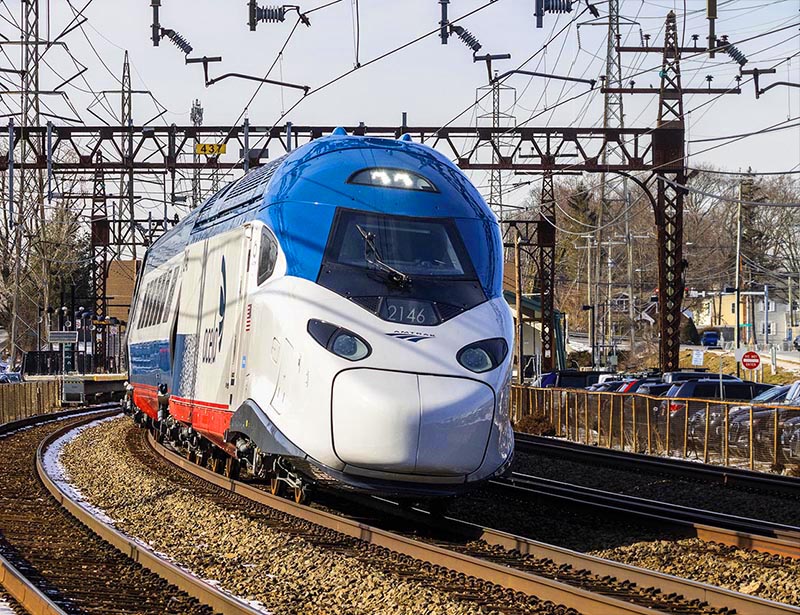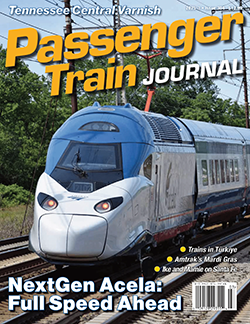 by Kevin J. Holland/photos as noted
by Kevin J. Holland/photos as noted
Amtrak’s NextGen Acela trainsets will be the oldest brand-new equipment in the company’s history when they finally enter revenue service, now expected to occur in the third quarter of 2025. If that sounds like a contradiction, it’s because the first of these trains was delivered by Alstom’s Upstate New York production facilities back in 2020. Known as the Avelia Liberty series in the builder’s global repertoire, they will replace Amtrak’s original Acela high-speed trainsets. Those 20 trains are now a quarter-century old and very much showing their age, with several already retired and serving as parts sources to keep the rest running.
A total of 28 NextGen Acela trainsets (initially known as “Acela II”) were ordered in 2016 as part of a $2.35 billion procurement enabled by USDOT to modernize and improve Northeast Corridor (NEC) service. For its $1.8 billion share of that total, Alstom contracted to provide the 28 trainsets as well as a 15-year maintenance and technical support package.
At the time of the August 2016 announcement, Chairman of the Amtrak Board of Directors Anthony Coscia stated, “As more people rely on Amtrak, we need modernized equipment and infrastructure to keep the region moving. These trainsets will build on the popularity and demand of the current Acela and move this company into the future as a leader in providing world-class transportation.”
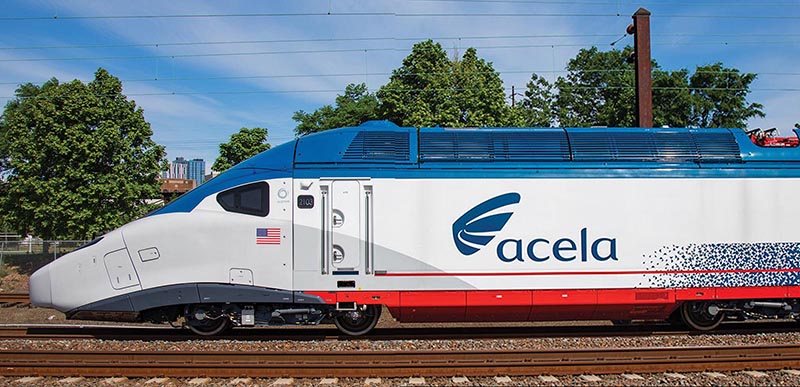
ABOVE: Power car 2103 in June 2020. At that time, the new trains were known as “Acela II.” —Marc Glucksman/Amtrak
“The next generation of Acela service will mean safer, faster, and modern trains for customers throughout the Northeast,” said U.S. Senator Charles Schumer (D-N.Y.) at the time. “This investment will pay immediate dividends for businesses and travelers from Washington, D.C., to Boston, and the fact that these new trains will be built in Upstate New York makes this project a win-win.”
Indeed, the trains’ construction initially created 400 jobs at Alstom’s Hornell and Rochester, N.Y., facilities. According to Amtrak, by 2024 a total of more than 1,300 workers had been dedicated to the trains’ assembly. With more than 95 percent of NextGen Acela components made in the United States, sourcing of parts from approximately 180 suppliers nationwide meant that the new trains’ construction boosted employment and economic activity in 29 states. As delivered, each electrified bidirectional trainset consists of nine articulated cars bracketed by a pair of compact 4,700-hp power cars, with the entire train measuring just under 700 feet in length. Consists can be expanded to 12 cars.
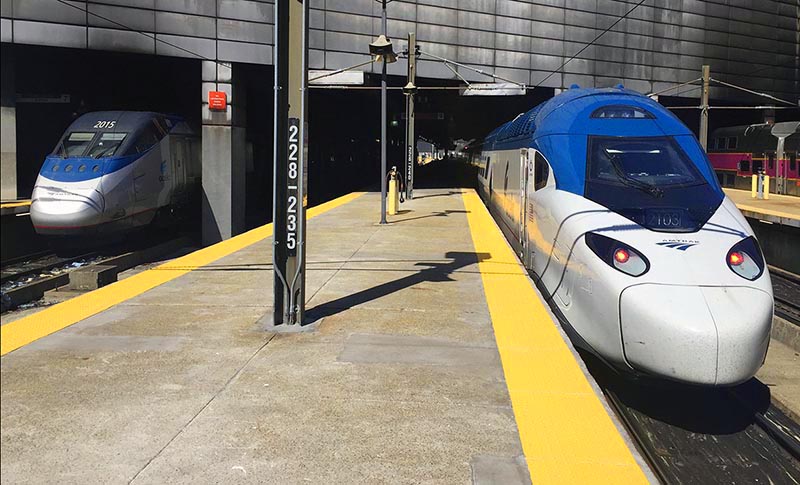
ABOVE: An April 8, 2021, meeting of Acela generations at Boston’s South Station. The new trains are 30 percent lighter than their predecessors. —Ari Ofsevit
Maximum service speed is 160 mph (257 km/h), with peak design speeds of 220 mph (355 km/h) with the electronic banking system deactivated and 187 mph (300 km/h) with cars in banking mode. Top speed of the original Acela fleet is 150 mph (241 km/h). The larger fleet (28 trains versus the original Acela’s 20) promises more frequencies, and each of the new trainsets can carry up to 386 passengers (including eight wheelchair locations). That’s a 25 percent increase over each of the original Acela trains’ capacity.
Two preproduction trains were delivered by Alstom in 2020 for testing by Amtrak and FRA. The first trainset, minus interior fittings, was sent to Transportation Technology Center, Inc.’s Pueblo, Colo., high-speed test facility in February 2020 to begin nine months of rigorous evaluation…
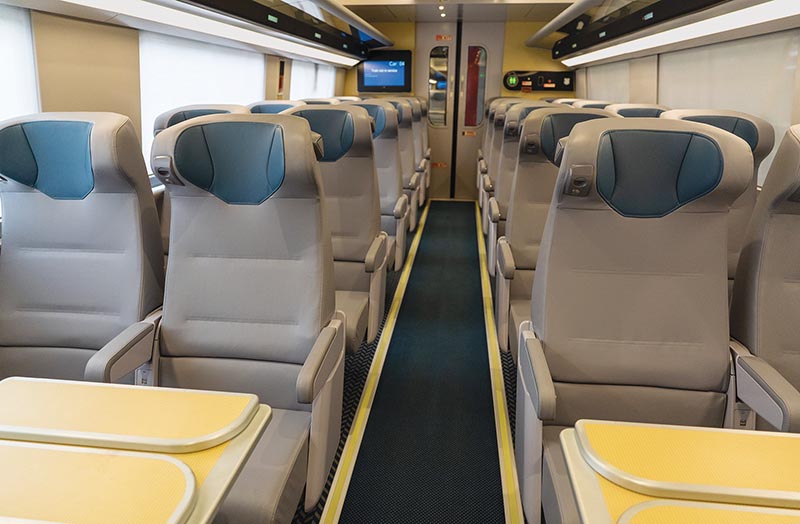
ABOVE: NextGen Acela Business Class seating is a standard 2+2 layout and features blue and gray leather upholstery and winged headrests with integrated reading lights. —Amtrak


